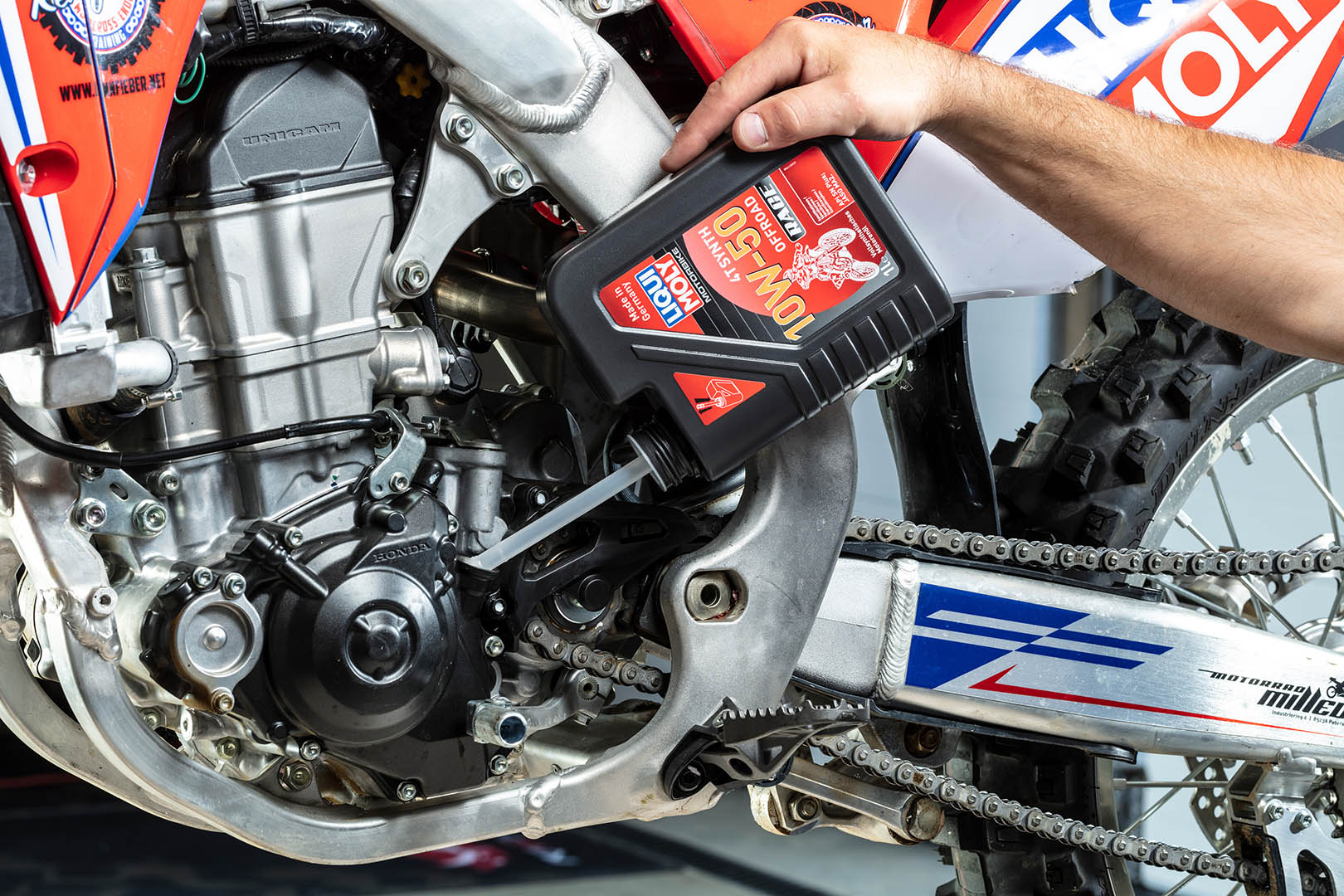
Motorcycle lubrication is black alchemy. Your engine’s oil does more than just lubricate it; it also helps clear up the exhaust and, in some situations, preserves fuel efficiency. Sites like Motorcycle Supersite suggest that you use oil as recommended in the bike’s manual if you are unfamiliar with this black alchemy. If you prefer changing your own bike engine’s oil, here’s how to choose your subsequent engine lubrication.
Bike Engine Oils Types:
- Mineral Oil: Mineral oil is a type of lubricant that does not include any complex chemical compounds. It is recommended that you use this type of oil if you do not ride your bike frequently. However, if you ride frequently or in harsh conditions, this engine oil is not the ideal choice for sustaining your engine.
- Semi-Synthetic Lubricant: The name comes from the fact that this oil combines synthetic and natural compounds. It extends the life of your motorbike engine while also protecting it from heat. This type of oil would best fit your needs if you are a motorcyclist who enjoys going for rides now and then.
- Fully Synthetic Lubricant: Fully synthetic engine oils often have excellent heat resistance and lubricating qualities. If you ride your motorbike frequently or live in an area with harsh conditions, this engine oil is advised.
How to Choose the Right Engine Oil?
- Read the Instruction Manual: The advised oil for your motorbike will be specified in the owner’s manual. Comply with the instructions in the manual if you wish to go the easy route.
- Know What Kind of Oil You’ll Need: Choose between mineral oil, semi-synthetic engine oil, or fully-synthetic engine oil based on your motorcycle usage. Also, be careful that you do not interchange engine oil with gear oil or so.
- Different Oils Used in Motorcycle Engines: The engine oils produced for cars differ from those developed for motorcycles for one fundamental reason: most bikes also splash the clutch in the engine oil, necessitating the addition of friction. Hence, do not interchange car and bike lubricants.
- Oil Grade: This gives the oil the ‘W’ rating. The number indicates the lubricant’s viscosity. A single-grade lubricant will be identified by a single digit followed by the letter ‘W,’ such as ’10W.’ A multi-grade lubricant, such as ’10W50,’ will contain two digits on both sides of the letter. It’s best to stick to the oil grade advised by your manufacturer.
- Additives: Experts recommend engine oil with additives to ensure that your engine runs smoothly. These additives aid in the cleaning and corrosion prevention of the motorcycle’s engine. Even while additives aren’t required, they can make a big difference.
Final Thoughts
As reputed sites like Motorcycle Supersite advocate, irrespective of your experience, you are always learning. And while learning, you should not be afraid to experiment but always know your limitations. To summarize this post, motorcycle engine lubrication comes in a dizzying assortment of options, but you won’t go wrong if you stick somewhere close to the manufacturer’s recommendations. Proper lubrication will ensure the smooth functioning of your motorbike, and you’ll avoid the dreaded situation of engine seizure.